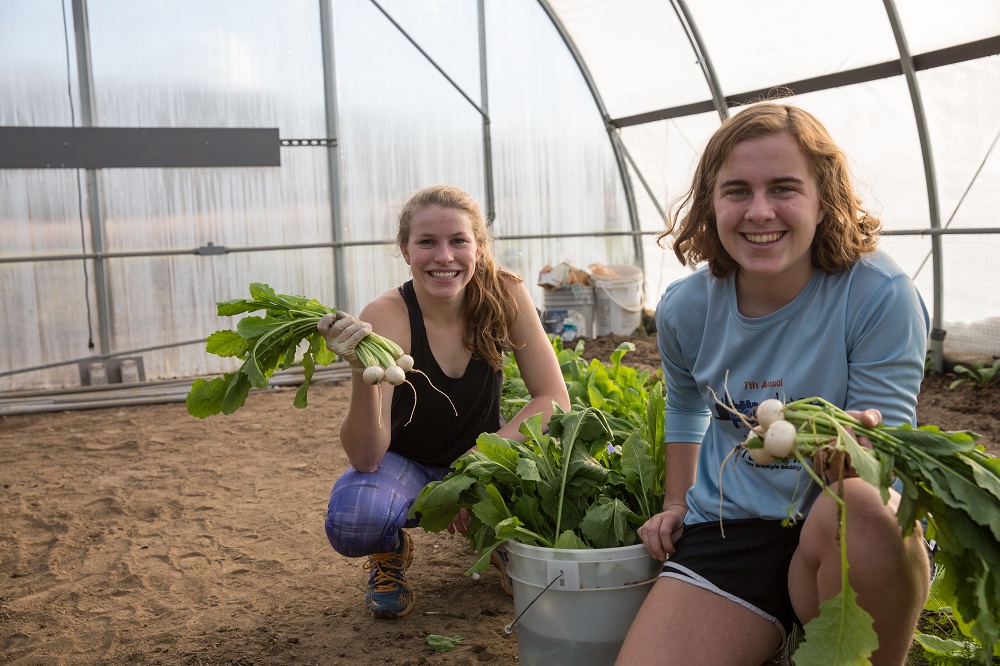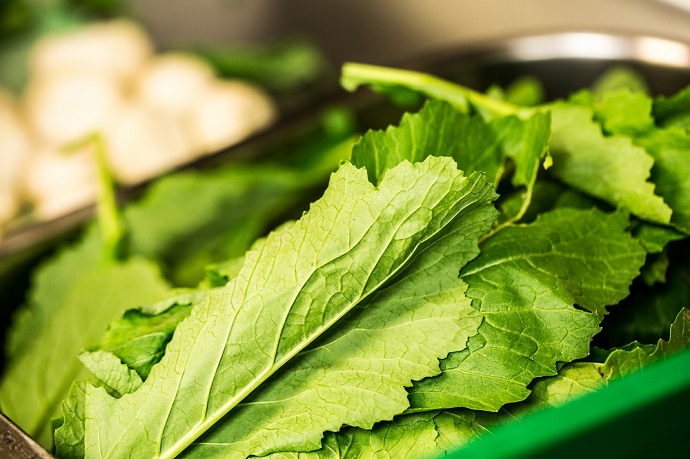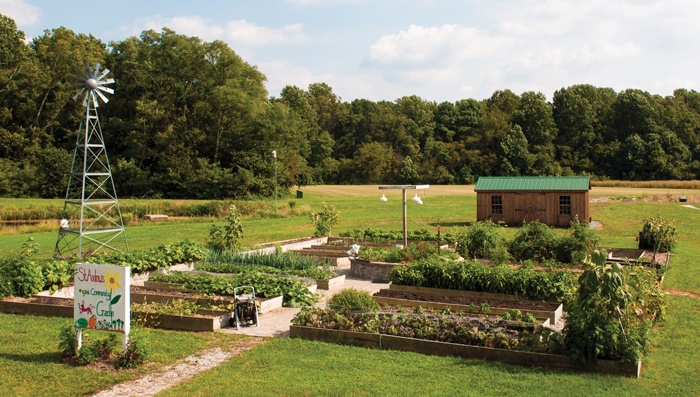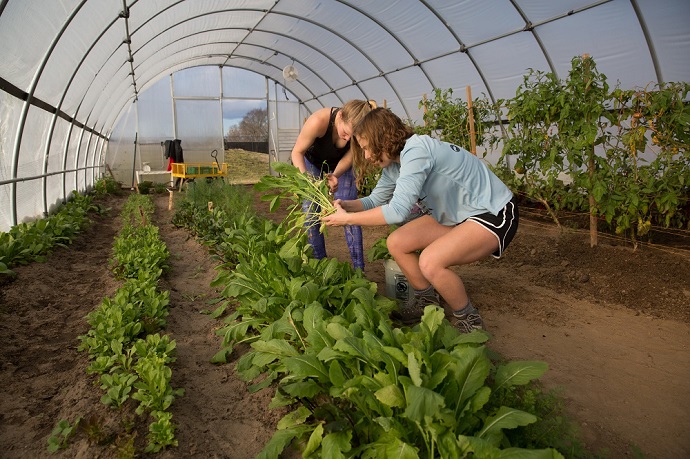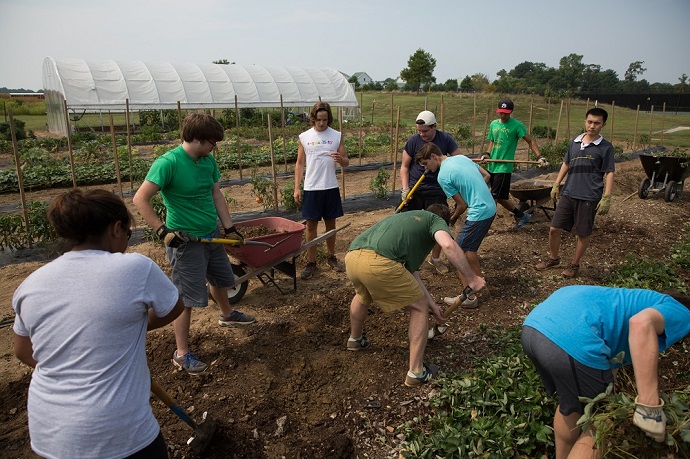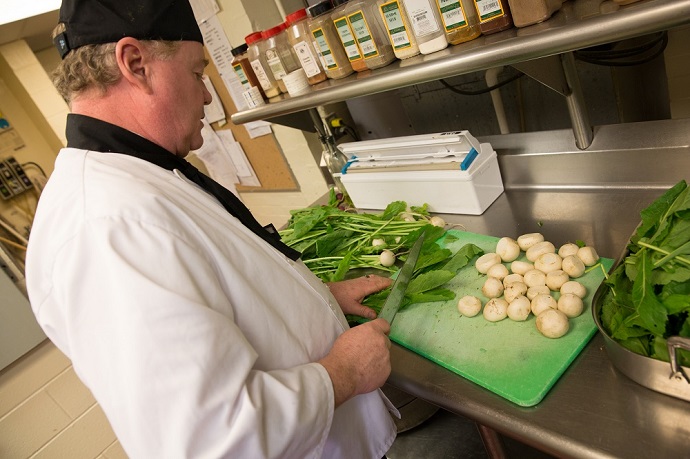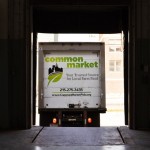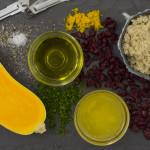At SAGE, we make a point of featuring locally-grown food in our dining halls, so we’re thrilled that 60% of our schools have on-campus gardens producing crops that can be incorporated into school meals—the ultimate in local sourcing. The gardens at St. Andrew’s School in Middletown, Delaware are an impressive sight. Our SAGE staff are always looking for new recipes that incorporate their fresh produce!
The St. Andrew’s garden started as a 5,000 ft2 field plot in 2006. Ten years later, the organic garden stretches across a vast three-quarters of an acre and encompasses flat beds, raised beds, and a hoophouse (a greenhouse made by wrapping plastic sheeting around metal hoops) with heat and drinking-quality running water to allow for year-round growing. The garden produces a veritable laundry list of fruits, herbs, and vegetables. Recent crops grown by Garden Director Susan Kemer include: broccoli, kale, fennel, carrots, leeks, onions, green beans, eggplant, sweet potatoes, peppers, squash, okra, raspberries, blackberries, strawberries, cabbages, cauliflower, herbs, watermelon, carrots, parsnips, radishes, edible flowers, tomatoes, tomatillos, turnips, and beets. Kemer even planted horseradish so SAGE Executive Chef Ray Strawley could make his own horseradish sauce! This year brought the garden’s first crop of broccoli, as well as a bumper crop of sweet potatoes that provided over 1000 servings—enough for St. Andrew’s Thanksgiving and the local food kitchen.
More than 25% of St. Andrew’s food is sourced from within 150 miles of campus, including the two or so bushels of assorted produce SAGE receives from the garden each week. SAGE incorporates the organic produce into any number of dishes. As SAGE Food Service Director Kelly Massett explains, “We take pride in caring for our community through food and service, and our partnership with the organic garden is a big part of the ethos here.” Inclusions range from the expected—like sliced cucumbers and radishes on the Improvisations® salad bar—to the downright inventive—like butternut squash flan. The vegetables don’t just appear in the salad bar or as side dishes, either; ingredients such as parsnips, green beans, zucchini, Japanese eggplant, and yellow squash are often featured in completely vegetarian meals. Kemer praises the team’s ingenuity: “Chef Ray always makes the produce look great. He’s very creative with everything that he does, especially when we have a lot of something.” Chef Ray makes sure to send a daily email to the St. Andrew’s community listing dishes of the day and anything coming from the garden. “Students, especially ones who help in the garden, really enjoy when the fruits of their labor are showcased on plates, buffets, and catering events,” observes Chef Kelly. After each meal, the on-campus garden receives food waste from the SAGE kitchen for compost, bringing the food cycle full-circle.
Students are actively involved in maintaining the garden. They can participate as Environmental Stewards or Garden Club volunteers, as well as during their Afternoon Activity period. Sports teams even use the opportunity as a team-building exercise. Some students conduct independent studies involving soil testing in the spring, and every year, an art class comes to paint watercolors. This year, a teacher even fermented kimchi with a class, using hot peppers and okra from the garden. Sometimes, students will take a meal that they’ve grown and SAGE has prepared, and serve it at a local charity—following the process all the way from farm to table. As garden volunteer Samir Arrington ’18 states, “It’s […] satisfying to do something with such tangible benefits—to work outside in the sunshine and see and taste the fruits of our efforts.” Kathryn Paton ’17 adds, “Mrs. Kemer is so ambitious in her planting, and it really pays off in the salad bar!”
If Kemer has her way, the dining hall can expect some new additions soon! A recently acquired 50' x 100' addition is being cultivated now. An older area of about the same size is being rested with nitrogen-fixing cover crops, or “green manures,” to provide a sustainable vegetative source of nitrogen and carbon to enrich the soil. This crop rotation embodies Kemer’s twofold goal: to increase production, and to increase quality. In the future, Kemer plans to take more classes on gardening techniques and agricultural production food safety, explore the potential for hydroponic growing systems in the hoophouse, and improve communication with students about the benefits of being a part of this important farm to table movement. She also hopes to better predict harvest times and coordinate with SAGE to plant key crops to enhance school meals. Every interaction Kemer shares with SAGE is rife with potential; it really is a partnership. “[Chef] Ray is so knowledgeable; he will use every part of the plant he can. I learn things from him all the time.” Our SAGE Team is learning, too, with every new item Kemer brings to the kitchen!

